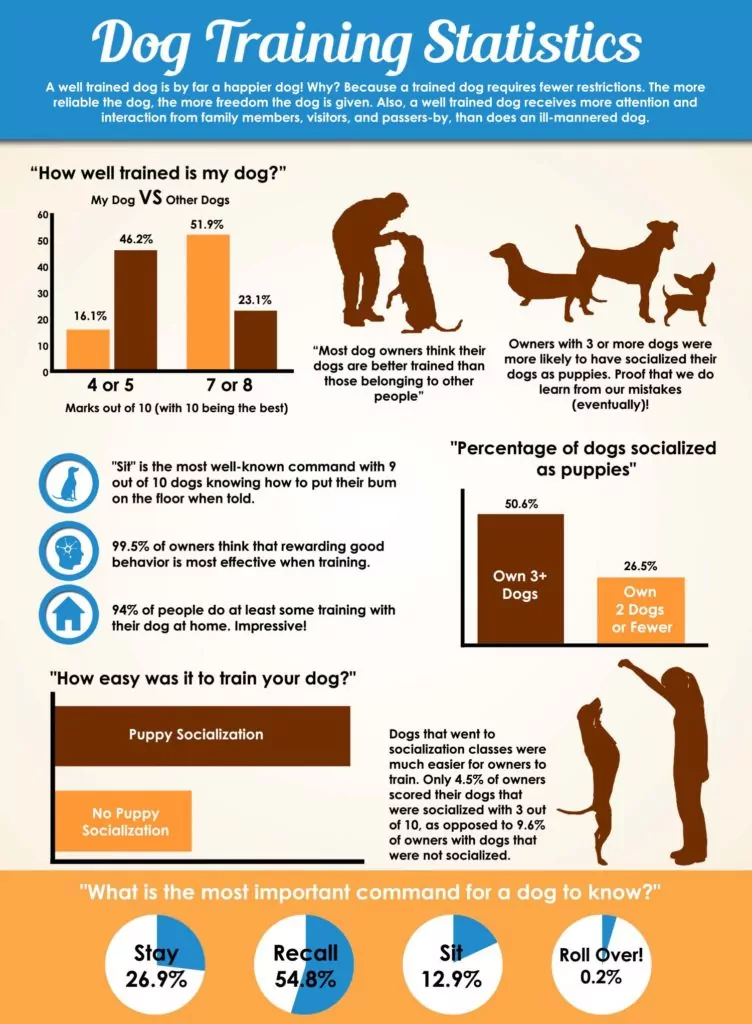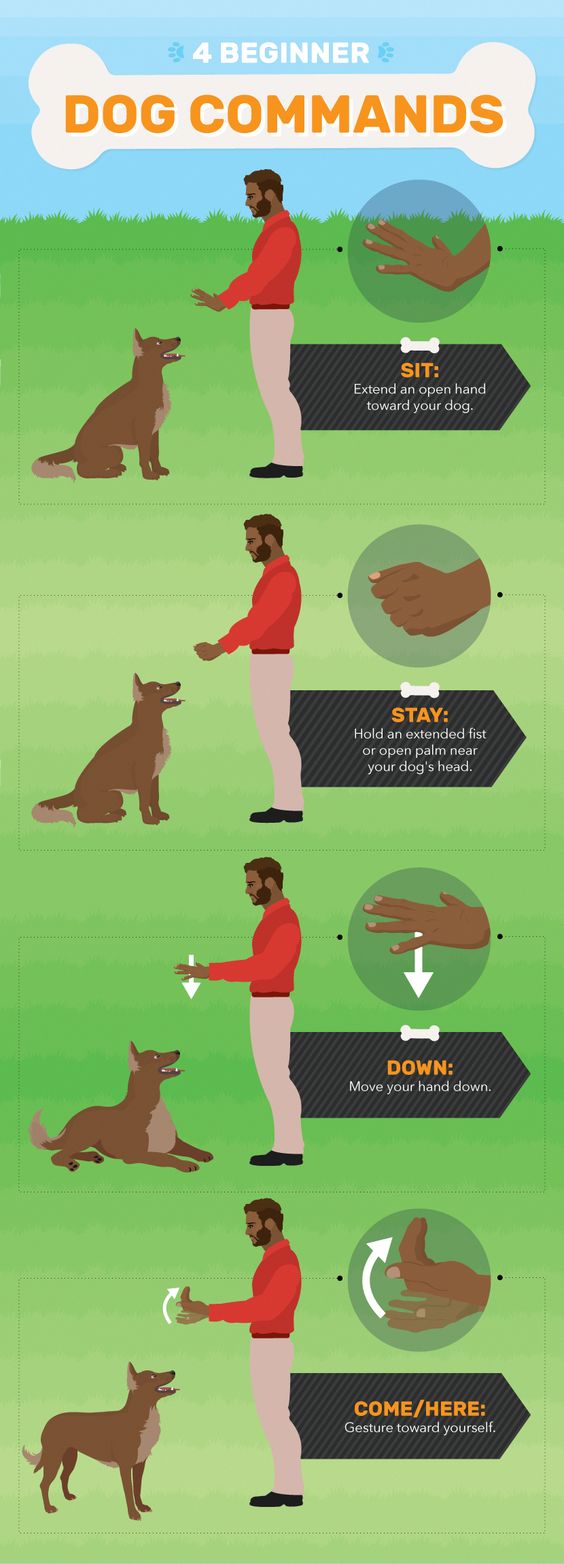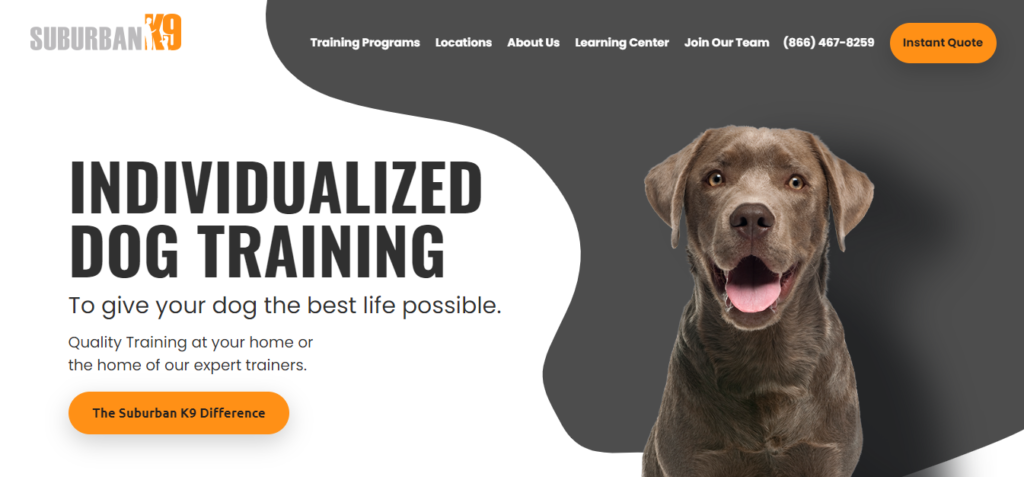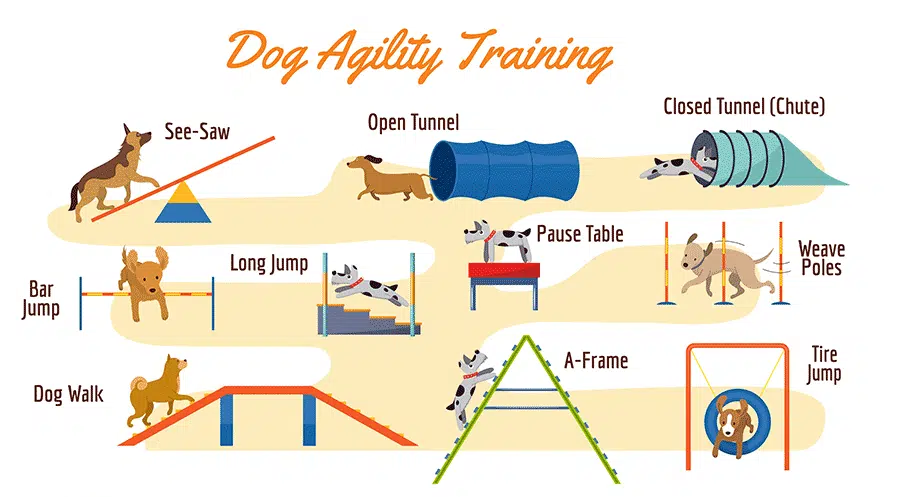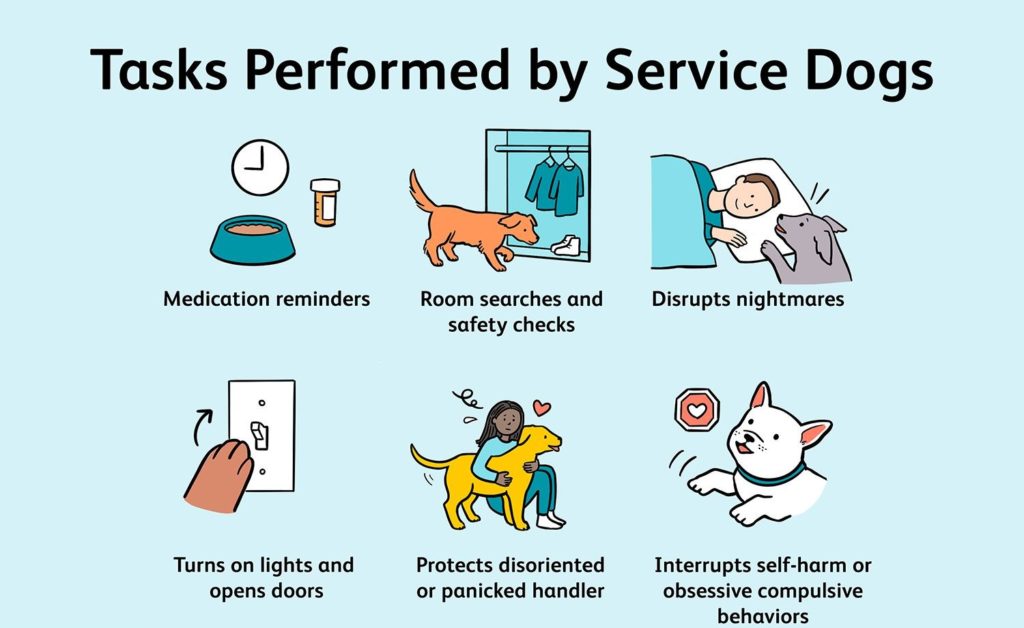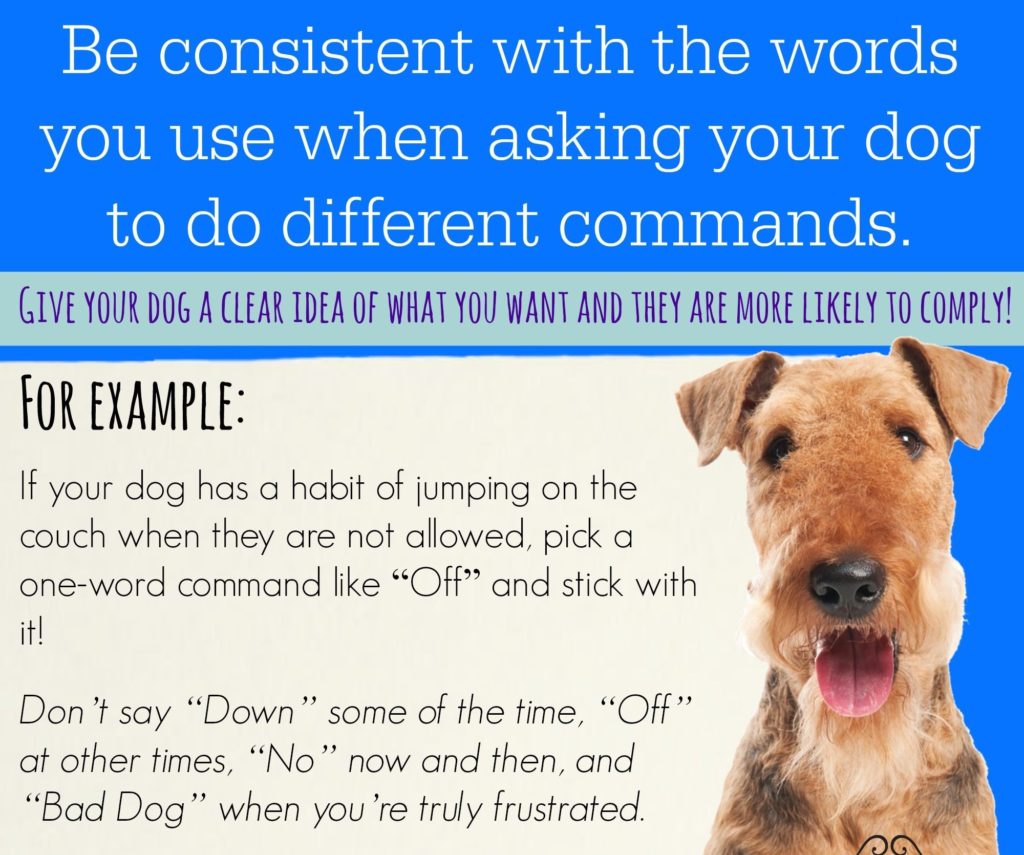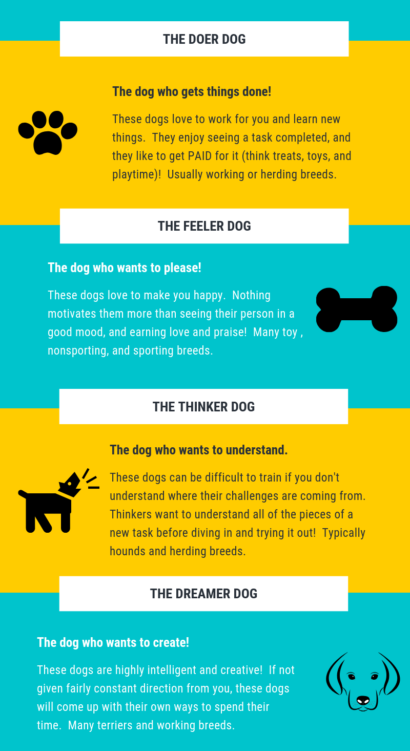7 Famous Dog Training Methods: Modern & Popular Types 2023
Whether you're a new pup parent or a seasoned dog trainer, teaching your furry friend new tricks can be both challenging and rewarding. From tail-wagging obedience training to pawsome agility exercises, there are many specialized types of training to help your doggo become the best canine they can be.
A dog is a man’s best friend only when it's well-trained and adjusted to its owner’s daily life routine. But there is so much more to training than teaching your dog to respond to “sit” and “fetch”. When you are a dog parent, knowing different types of dog training and all the details involved in them is crucial. These types of training require a lot of attention and specialized techniques.
This article will answer a lot of your questions about specialized dog training techniques and guide you with the 7 most effective types. By the end of this guide, you will have a thorough understanding of various training strategies and know how to select the technique that will make your pooch a top dog.
7 Specialized Types Of Dog Training To Have Competent Canines
There is no single standard rule of learning for anyone. May it be humans or dogs. We all learn in different ways. Fortunately, over the years, trainers and behaviorists have developed different approaches to dog training that can help you succeed no matter what your goals are!
Here are 7 specialized types of dog training techniques that you can choose for your dog based on its breed and capabilities.
1. Obedience Training
Let’s start with the basics. If you have a new puppy or dog, there is a lot to be done. You need to train your dog, acclimate them to your home, take them to vet appointments, and pick up the proper dog supplies. This is the right time to get a jump start with obedience training which starts with basic commands like heel, sit, stay, down and come.
If your new dog skips this part of training, expect little to no success during other training techniques. It is the foundation of dog training and that’s why dog experts suggest that basic obedience training should be started early and reinforced consistently throughout your dog's life.
Decide if you want to hire professional help from our experienced trainers, take online lessons, or do it yourself. Gather the right equipment like a collar, harness (depending on how your dog reacts to either), and maybe some dog treats.
Choose a method, say, balanced training, positive reinforcement, or clicker training, and commence with short spans. We believe in balanced training because it is important that each dog learns that their owner is in charge and that they need to listen. If your training involves too much excitement and too many treats your dog may not learn how to be calm and that can be very frustrating.
- THICK, LONG LASTING BULLY STICK
- Made from all natural, grass fed, free range Cattle.
- Safe alternative to rawhide and easily digestible.
- Keeps dog's teeth & gums healthy.
- 12 PACK
Starting with smaller steps is a more viable approach. Gradually build up but initially, stick to one command per routine so that your doggo doesn't get confused. We generally train very young puppies in 15-minute sessions and work our way up to hour-long sessions with adult dogs.
You can always get help at any point in the training; it does not mean that you have failed if you need to bring in a professional dog trainer. Additional help from an expert who can customize the training according to your dog’s personality can make a world of difference with your dog’s behavior.
2. Therapy Training
You have probably heard of therapy dogs. The main job of these dogs is to provide support and affection to individuals in schools, hospitals, and other facilities. But therapy training takes time and patience.
You can self-train the dogs or hire experts to do so. This training is not a challenge if your dog already knows all of their basic obedience commands. Once they know heel, sit, down, stay, and come you just need to understand what else is required to train a therapy dog and then follow a daily training routine.
Start with the 10 basic commands in the CGC test. This training test is heavily based on basic obedience training with the inclusion of public socialization. For preparation, you can get help from tutorials on therapy training. Some therapy groups require more than just the CGC test before your dog can perform therapy at their location. The specific test that a therapy dog needs to pass can vary depending on the organization or facility with which the dog will be working.
This comprehensive book will cover all ten tasks that are required by the American Kennel Club's Canine Good Citizen (CGC) test and how to train for them. Check it out if you are thinking about taking the CGC Test!
However, most therapy dog tests simply evaluate the dog's behavior and temperament to ensure that they are safe and well-suited for interacting with people in various environments.
In the end, a therapy-trained dog should be:
- Calm
- Well-behaved
- Leash trained
- Able to be handled easily
- Friendly towards unfamiliar dogs
- Friendly towards unfamiliar people
3. Behavioral Training
There is a thin line between obedience training and behavioral training. And most people confuse these two. If your dog is showing signs of separation anxiety or fear aggression, you need behavioral training rather than just obedience training.
Behavior training teaches a dog to respond to different situations, both when the owner is and is not present. It is used to correct and modify unwanted behavior in dogs such as excessive barking, biting, digging, or jumping.
This training is not based on verbal commands. For starters, you can work toward your dog taking the American Kennel Club’s CGC test. This will help you analyze your dog’s current behavioral traits and or issues.
The focus of behavioral training is to address the underlying cause of the behavior so that you can create a plan to fix it. Rather than being mad or frustrated every time your dog does something wrong, you need the plan to address it in the moment. We often incorporate obedience training into our solutions for behavioral problems. For example, if your dog is aggressive at the front door, we will teach them the heel command and the stay command and then use those commands as a calming technique when a stranger comes over. This type of training can be used for dogs of all ages, breeds, and temperaments, and can help build a stronger bond between the dog and its owner.
Hiring an expert trainer like us at Suburban K9 for behavioral training is the best way to go about it. We have a team of experienced trainers who specialize in a variety of behavioral issues, from jumping, barking and chewing to complex issues like anxiety and aggression.
Our trainers work one-on-one with you and your dog to develop a customized training plan that is tailored to your specific needs and goals. We identify the root causes of your dog's behavioral issues and with this understanding, we develop a training plan that addresses the underlying issues, rather than simply treating the symptoms.
4. Agility Training
Agility training is a lot of fun for both the dog and its owner. It is a great way to bond and exercise together.
Ever heard about agility sporting events for dogs? Have you seen the obstacle courses in dog shows? The dogs that take part in such sports events feel like heroes and have a blast in the process. Agility training is all about that.
It works with verbal commands and body language. The commands are not as simple as the basic ones and they need to have a strong bone and joint system for agility training. It channels the dog’s energy into something positive and this builds a stronger bond between the dog and the dog's owner.
If you are looking to teach your dog agility and have all the items right in the comfort of your home. Check out this dog training agility equipment kit.
- Transform your backyard into a canine adventure with Better Sporting Dogs agility equipment.
- 10’ long tunnel, 24” in diameter adjustable tire dog jump, (2) adjustable bar jumps, fixed base weave poles, chute tunnel, pause box, and carrying case.
- DESIGNED BY DOG LOVERS, FOR DOG LOVERS
- VERSATILE AGILITY ANYWHERE, ANYTIME: lightweight, durable, and suitable for indoor or outdoor use.
- Made by a US-based company, offering top-notch customer support.
The bond is strengthened as the owner helps the dog overcome obstacles that at first might seem difficult to the dog. This helps reduce fear and build a lifetime of trust between the dog and the owner.
This training may seem fun but it's not that easy. It requires dedication from the dog as well as the owner. The best part about this training is the mental and physical stimulation it brings. The sense of achievement when an obstacle course is completed, well that's another story.
5. Protection Training
The best Protection Trained Dogs - Premier Protection Dogs Overview 2015
Only certain breeds of dogs are capable of becoming guard dogs. A breed that is fearless, confident, and naturally suspicious about strangers usually makes successful protection dogs. If you want to train your dog for a protection program, it makes sense to start with the right breed and temperament.
We believe that dogs trained under protection programs are often not safe to keep as domestic pets and this training should only be done by professionals who are going to ensure the training is done properly and that the dog lives safely in its home. If you are considering protection work for your dog, it is essential that you hire a reputable company with years of experience.
The ideal dog age for starting protection training is at least 12 months. German shepherds, Dutch Shepherds, Belgian Malinois, and Dobermans are often considered the ideal breeds for this purpose because these breeds are born with an instinct to protect their home and family.
6. Service Training
Service dog training is specifically designed to prepare dogs to assist people with disabilities, whether it is a physical, mental, sensory, or psychiatric disability. Keep in mind that this is different than training a therapy dog. Therapy dogs help people by being new friendly pup to meet while service dogs perform actual tasks for their owners.
The specific training that a service dog receives can vary depending on the person's disability and needs, but some common tasks that service dogs are trained to perform include:
- Fetching items like a walking cane or glasses
- Guiding and providing mobility assistance to visually impaired people
- Responding to medical emergencies like fluctuating sugar, blood pressure, or seizures
- Helping alert people with hearing disabilities about important sounds like approaching cars
The training process for service dogs is typically rigorous and involves multiple stages of training, beginning with basic obedience and gradually progressing to more complex tasks. In addition to task training, service dogs also receive extensive socialization and desensitization training to ensure that they are well-behaved, calm, and confident in a variety of environments. This is another type of training that should always be done under the guidance of an expert. A service dog needs to be perfect in performing its tasks and you don’t want to leave this to chance.
7. Tracking
The First Step to Teach Your Dog Competitive Tracking
All dogs have an extremely powerful sense of smell and teaching them to use it can help them feel fulfilled in life. We know, we know, all dogs are born to be “nosey” but some are gifted enough to be trained in tracking and other dog sports.
Tracking training is a specialized technique used to teach dogs to follow a scent trail and locate specific objects or individuals. This type of training is often used in law enforcement, search and rescue, and hunting, but it can also be a fun and challenging activity for pet owners and their dogs.
During tracking training, dogs learn to use their sense of smell to follow a trail, distinguish between different scents, and work with their handlers to locate the target. With patience, consistency, and reinforcement, tracking training can help dogs develop their natural tracking abilities and provide mental and physical stimulation that can improve their overall well-being.
Did you know: AKC holds a national tracking event for tracking trained dogs.
Now that we are familiar with different training types, let’s discuss the ways to effectively train your doggo.
4 Proven Strategies For Training Your Dog Effectively
Before you start building a training routine for your pupper, here are a few strategies that will build a bond between you two. Bridging this gap will lead to a more effective training program.
A. Creating A Connection
Training means you and your dog are on the same page and for this, you need to have a connection. Start with building a good relationship with your dog. After all, you got one in the first place for companionship.
The first step towards this is better communication. No, we are not asking you to speak the dog’s language. Your body language, emotions, and energy will do the talking here. Dogs have been around humans for hundreds of years and have adapted over time to become excellent at reading our body language.
They tend to be far better at it than we are at reading theirs. What this means is you can feel free to be yourself when training and let your natural body language communicate your wants and needs to the dog. Whether you're trying to teach your pup a new trick, correct bad behavior, or just understand their needs, clear communication is essential.
Dogs are highly social animals and they rely on us to communicate effectively with them. This means paying attention to their body language, vocalizations, and behavior, as well as using consistent commands and praise. By establishing a strong line of communication with your dog, you can build trust, improve their obedience and behavior, and deepen your bond.
B. Be Consistent
Consistency is the name of the game here. When you think you have worked enough on building a connection, start introducing the basics of training and stick to them.
Reward them for good behavior with simple verbal praise. If your dog is a young puppy and you are teaching the come command we are fans of adding treats to the mix to encourage a little excitement. Make sure not to overdo it here because we don’t want to get them too excited. Praise every time they do well. Use the same voice pitch when giving out certain commands so that they can understand the command better.
Be consistent in these tiny things and it will pave the way for ensuring that your dog will listen to their obedience commands no matter what is happening. We call this “proofing” the obedience command.
C. Exercise Patience
Training takes time. Remember, Rome wasn't built in a day. Even professional working dogs who have learned some amazing skills take five to six months just to learn the basic skills. Don't get frustrated if some days don't seem as successful as others.
From a dog behavior expert's point of view, there will be good days and bad days. You just have to practice patience. Remember, it is you who is in control. Don't lose that control when frustrated. You need to take your time to master the basics.
D. Every Dog Is Different
Some dogs react to their surroundings much more quickly than others. Since you want a dog that would mesh well with your lifestyle, do your research well and adopt or purchase one accordingly. Don't just go for one that your children insisted on getting because it was cute or one that would add the cool factor to your lifestyle. You can utilize our Breed Consultation service or our Picking a Puppy article for more help on this topic.
Some dog breeds are known for having a more adaptable nature and willingness to learn while some are not. Choose your dog breed wisely and then make sure to train it properly!
Now that you know more about specialized training, it's time to discuss how to pick the right one for your dog.
How To Choose The Best Training Technique For Your Dog
The following pointers will help a great deal in choosing the best training technique for your dog.
I. Find a Method You Believe In
It is important to find a training method that you believe in. Some people believe in purely positive dog training and never correcting their dog. Others believe in balanced dog training. Balanced dog training involves teaching your dog their commands and right from wrong. After your dog knows their commands, if they listen a balanced trainer will praise them and if they don’t listen a balanced trainer will give a correction. The correction should not be harsh or mean, it is just meant to enforce the rules.
II. Take In Your Dog’s Personality Traits
Remember, there are no bad dogs. Every dog is different. Just like us humans. Some things motivate and make us work and while some are a complete turnoff. The same is the case with dogs. So the sanest thing is to understand your dog’s personality and work according to its temperament.
Anxious dogs will respond much differently than stubborn/confident dogs. Anxious dogs may need much more calm praise to help them feel at ease while confident dogs need a firmer leader. Knowing your dog’s breed and history can help you choose the proper training technique. It is important to remember that every dog is unique so you can’t base everything on their breed. Remember, if you are looking for help, read our article on Choosing a Training Methodology or get a price quote for one of our experienced trainers to come to you.
III. Consult A Professional
Getting professional help is always a good investment for your and your dog’s sanity. Lack of communication between the dog owners and the new dog is the most common reason that training fails.
If your dog can’t or won’t do what you are asking it to do, you need a professional dog trainer to help bridge this gap. Professional dog trainers at companies like Suburban K9 are experts in reading your dog’s body language and communicating with them.
Conclusion
When we say dog training, it certainly does not mean rigorous military training. So if you think training a dog is only linked to teaching them to sniff bombs in hidden places or raiding car trunks to debunk unusual activity, you have misunderstood the concept behind dog training.
Dog training starts from teaching them to respond to basic commands like sit, no, or heel and can go to extensive and specialized types of training like agility or therapy training.
You must understand your dog’s personality before starting a training program. A professional dog training company can work miracles with your dog if you have hit a roadblock.
With Suburban K9, seeing is believing, particularly when it comes to transforming results. We have extensive knowledge and ample experience in how to train a dog. Change your dog's behavior today by booking a dog training lesson with our expert trainers and see the results for yourself.
FAQs
- What are the 7 commands to train a dog?
These commands commonly include sit, stay, come, down, heel, off, and no. These commands help the dogs stay safe, obedient, and well-behaved. These commands can be built upon and customized based on the specific needs and goals of the dog and its owner.
- Will training improve my dog’s behavior?
Yes, training can significantly improve your dog's behavior. Dogs are social animals that have a natural desire to please their owners. Proper training can help your dog learn what behaviors are expected of them and teach them how to interact appropriately with humans and other animals. A well-trained dog is more confident, well-behaved, and enjoyable to be around.
- What are the golden rules of dog training?
There are five golden rules when it comes to dog training. The first of which is building a good rapport with your dog. Then use obedience training to strengthen your bond. Being consistent in your training is the third golden rule. The final two rules are keeping patience during rough days and not stretching your dog past its limits. If you plan on training your dog, never forget these 5 rules and make them the foundation of your training.
- What is the alpha theory in dog training?
The alpha theory that many people discuss comes from pack behavior. The theory originated with wolves and has been applied to dogs as well. Some people will say that the alpha theory does not apply, while others strongly believe in it. One interesting thing to consider is that even humans seem to follow some sort of hierarchy system.
Think of the way humans interact at work and in other social settings. There is often a group of individuals that take charge and others that follow. Then there is another group that goes against the leader or the group and is the antagonist. All of these same characteristics can be seen in social interactions between dogs and interactions between dogs and humans. So whether you believe in alpha theory or not, just know that the complicated interactions of humans and dogs are an extremely important part of training with your dog.
- What is the recommended dog training method?
The training method that would be the most recommended for you and your dog really depends on all the factors we have laid out in this article. Using positive reinforcement is an important factor in any dog training method and then you need to decide if you are comfortable using corrections and if so, what corrections to use. Make sure to read over our article on Choosing a dog training method to learn more.
